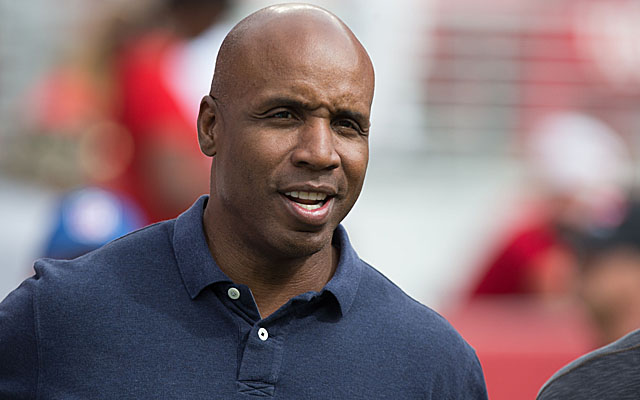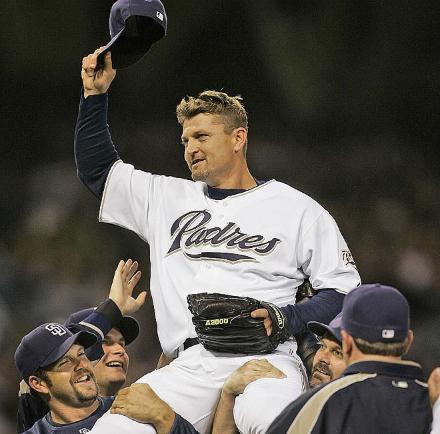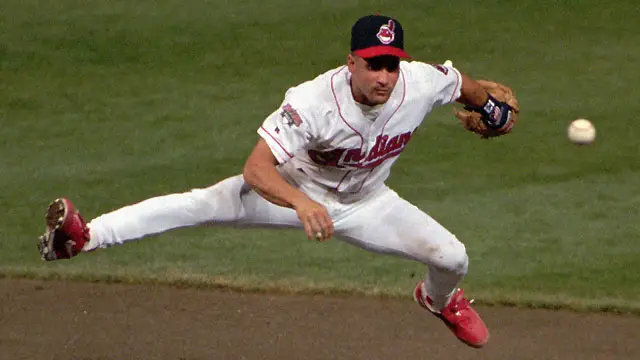The Next Cooperstown Class: The Official 2018 East Village Times HOF Vote

To Juice or Not to Juice
We’ll jump into the deep end right from the start. Steroid use, known or alleged, has certainly had an impact on a number of candidates whose statistical accomplishments warrant induction and, at times, inclusion among the best to ever play the game of baseball.
Taken as a whole, the EVT staff’s ballots reflected similar struggles with attempting to reach a decisive verdict on the issue, with Barry Bonds and Roger Clemens being the two eligible players closest to induction while others like Gary Sheffield, Sammy Sosa, and Manny Ramirez lagged farther behind.
John Tompkins said that the underlying talent of Bonds and Clemens is a differentiator from other steroid users (proven or alleged).
“For me, it was pretty obvious when Bonds started using – it was a few years into his first contract with the Giants,” Tompkins said. “Sure, he went crazy after he started using, but there isn’t a doubt in my mind that he would have had a Hall of Fame career without PED’s.”
Miguel Vazquez agreed, noting the unique impact of Bonds and Clemens even relative to other alleged steroid users.
“In my mind, they defined an era,” Vazquez said. “People cared about Bonds and Clemens in a unique way.”
Nick Lee offered a similar perspective, pointing to the role steroids played in the history of the game.
“I don’t view the Hall of Fame as some pearly gates to heaven,” Lee said. “It’s a museum, and you can’t tell the history of baseball without guys like Bonds, Sosa, Clemens, [Mark] McGwire, et cetera. I think it’s sad and maybe unwise to throw out a whole era of great baseball.”
However, as demonstrated by the fact that neither Bonds nor Clemens actually received enough votes from the EVT staff to be inducted into the Hall, many still questioned whether those players’ dishonest approaches to the game should be honored.
“If you are willingly able to take performance enhancing drugs, you do not deserve to be in the Hall of Fame,” Ryan Davis said. “From a moral standpoint, these players willingly cheated and shouldn’t be rewarded for doing so.”
“Steroids – taking chemicals to alter your performance – crosses the line for me,” Kent Williams added.
Slotting into this question of morality alongside suspected PED users is Curt Schilling, whose politically-charged comments as an ESPN broadcaster have cast a shadow over many of his on-field accomplishments.
Mike Ursery, who included Schilling on his ballot, said that he did so because his focus was on those on-field accomplishments.
“I excluded what happened outside of baseball,” Ursery said. “His performances in both the 2001 World Series and the 2004 ALCS went a long way for me. The legend of the bloody sock will live forever.”
The Closer Conundrum
Ranking just behind performance-enhancing drugs among Hall of Fame talking points is the legitimacy of closers as a species when it comes to eligibility. Those in favor of electing elite relievers point to their impact on the end of games and the established role they hold on rosters today, while those arguing against their inclusion are quick to notice their low innings totals and the success mediocre starting pitchers have often found in the bullpen.
Trevor Hoffman, who I probably don’t need to tell you made his name as a member of the hometown Padres, glided into Cooperstown on EVT’s ballot, and will likely be elected in turn by national baseball writers this year after missing out on election by just five votes on the 2017 ballot.

However, he was the only reliever who even sniffed induction, as Billy Wagner received just 10.5 percent of the vote and fellow closers Brad Lidge and Jason Isringhausen were left off ballots completely.
Many EVT writers pointed to Hoffman’s longevity and consistency, which translated to more than 600 saves over the course of his career, as the reason for his inclusion over other relievers. Ryan Davis argued that the case should be extended to Billy Wagner as well, indicating the statistical superiority of both over their ballot counterparts.
“They both rank in the top six all-time in WAR among relief pitchers,” Davis noted. “For Hoffman, he’s second all-time in win probability added (32.78), ahead of Hall of Famers like Goose Gossage, Rollie Fingers, and Bruce Sutter, and he has a better career K/9 (9.4) than Mariano Rivera. Meanwhile, Wagner has the best ERA (2.31), ERA+ (187), and K/9 (11.9) of any of his Hall of Fame counterparts. Combined, they were two of the best at what they did and deserve spots in the Hall.”
Despite the possibility of hometown bias, however, Hoffman failed to garner a unanimous vote, with EVT prospect writer Patrick Brewer leaving the closer off his ballot. However, Brewer was quick to point out that this was no fault of the Padres legend.
“I just couldn’t justify leaving out other guys,” Brewer said. “He’s a Hall of Famer, but his case isn’t as good as ten other guys on the ballot. For example, I look at Scott Rolen, and think that as a third baseman, he had more value than a great closer.”
Expect this debate to reach a breaking point next spring, when postseason star Rivera first becomes eligible for induction.
The Tortoise or the Hare?
Another problem encountered by Hall of Fame voters is the difference between a player who thrived on longevity and consistency relative to one who put together a handful of all-time campaigns before succumbing to injuries or age. How do Fred McGriff’s ten seasons of 30+ home runs compare to Johan Santana’s few seasons of superstardom? Are both deserving of election? It depends on who you ask.
The EVT staff ultimately seemed to decide that eyebrows raised in either camp were enough to keep candidates out of the Hall. However, some members remained staunch supporters of their favorites.
“I voted for [Larry] Walker and McGriff because they were quality producers for a long time who were overlooked in my opinion,” Kent Williams said. “Walker especially stands out, because he played in Coors Field, but his career adjusted OPS (which factors in park effects) is still phenomenal.”
Jason Freund added Mike Mussina to his ballot for similar reasons.
“Mussina was just a total workhorse,” Freund said. “He had 11 years where he threw over 200 innings, and his FIP was actually lower than his ERA. He could’ve won a Cy Young if a guy named Pedro Martinez didn’t blow everyone else out of the water.”

Tanner Wrape, meanwhile, was the only EVT staff member to name Santana on his ballot, citing the incredible run of success the southpaw had in the mid-2000’s.
“From 2003-2008, he had a 2.86 ERA in more than 1400 innings, and struck out four times as many batters as he walked,” Wrape said. “He won two Cy Young awards along the way and has a no-hitter to his name. His lack of longevity is a clear issue and is going to hurt his chances, but his name definitely deserves some recognition. He was as good as anyone at the height of his career.”
Gold Gloves Worth a Bronze Plaque?
Three players on the ballot – Scott Rolen, Andruw Jones, and Omar Vizquel – built a significant portion of their legacy on the defensive side of the ball. None of the three came that close to induction in the EVT vote. Whether due to the tougher toll age takes on players’ defensive abilities, or because of the difficulty in objectively measuring success with the glove relative to the bat, defensive wizards (such as the aforementioned Mazeroski) often seem to have trouble garnering enough votes to earn election if their offensive skills weren’t also top of the class (Willie Mays, anyone?).
Vizquel quickly became the center of this debate among EVT writers, as his offensive performance is the closest to common of the three. The Hall of Fame case for Vizquel, more than most, depends not only on the importance of defense but also on the weight one puts into newer defensive statistics that have been used to retroactively evaluate performance with the glove.
EVT editor James Clark noted the difficulty in objectively measuring defense with these statistics.
“Defensive metrics often seem to contradict themselves, so it’s difficult to get a 100 percent accurate view,” Clark said.
“I don’t love defensive metrics,” added Patrick Brewer. “I wouldn’t vote a guy in solely on defense. That being said, it can add to a guy’s value, like in the cases of Scott Rolen or Andruw Jones.”
Others tried to draw comparisons between Vizquel and other defensive-minded infielders in the Hall such as Luis Aparicio and Ozzie Smith, with Smith’s name coming up the most often.
“Smith’s defense was actually better than Vizquel’s if you look at defensive metrics,” Ryan Davis said. “Vizquel also played in an era where offense was way up, so he has a lower wRC+ (83 versus Smith’s 90). Smith also stole around 100 more bases, so I’m not sure they’re as close as we think. I’m not trying to discount Vizquel’s ability because he’s still one of the greatest fielders of all time, but because of how bad he was offensively, it’s going to hurt him a ton.”

Despite this, Vizquel did still manage to make his way onto four EVT ballots, including that of Francisco Velasco.
“It was definitely about defense above everything,” Velasco said. “The shortstop with the highest fielding percentage deserves to be in the Hall.”
Et tu, Matsui?
Perhaps the biggest surprise of the entire vote was the inclusion of Hideki Matsui, who arguably carries one of the weaker cases for Hall of Fame induction on this year’s ballot. For Jason Freund, however, Matsui’s two All-Star appearances and single season with more than thirty home runs was enough to warrant inclusion on the ballot.
“I picked Matsui because he’s one of the better Japanese hitters to come over and play in the States,” Freund said. “He had a great mix of power and plate discipline that gave him a career OPS of .822. I just feel like he doesn’t get enough love.”
Conclusion
Ultimately, the East Village Times Hall of Fame vote offered little in the way of true surprises. That being said, what it did give was a deep glimpse into the tensions and difficulties of deciding who gets enshrined in the hallowed halls of Cooperstown and who falls to the wayside. When it comes to playing baseball gods and deciding which players deserve immortality, there are few easy answers.
There are answers nonetheless, though, even if debates rage on long after busts have been cast and speeches have been recited. It’s one of the beauties of a sport that thrives on tradition and comparison even as it churns forward into its future. No matter how long they play, there will always be great players to reminisce about.
After all, you know what they say.
Heroes get remembered, but legends never die.
Noah is a current undergraduate at the University of San Diego. In addition to his classes as a Business Economics student, Noah serves as the scouting director for the nationally-ranked USD baseball team and as an NFL correspondent with The Mighty 1090. You can follow him on Twitter @thebackseatlamp
Great article, Noah! Interesting findings. I hope we can all find room in our hearts to forgive Patrick for leaving Hoffy off his ballot 🙂